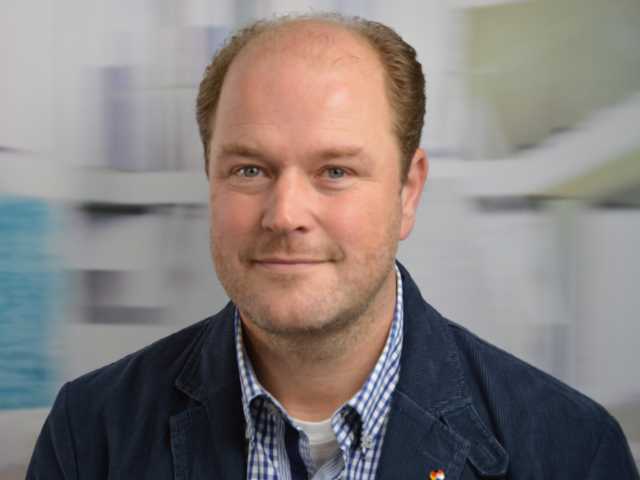Greenmapper: turning research into an app to allow nature-lovers a voice
| Date: | 13 July 2017 |
| Author: | Peter van Kampen |

Peter van Kampen works at Energysense at the Faculty of Science and Engineering, at the newly developed branch office of UG in Papenburg, and at the Faculty of Spatial Sciences with a research interest in measuring preferences and developing web based or mobile tools for fieldwork. Together with Associate Professor Frans Sijtsma, he developed Greenmapper: an internet platform that allows those who love nature to have a voice in its management.
Infrastructure projects routinely try to weigh the options of where to place a road, or where to build power stations. They usually consult appraisers, urban planners, engineers, local residents, and environmentalists so as to ascertain the best option. However, there are two overlooked groups who have a stake in this process: nature and tourists. This is problematic because eco-tourism can be the sole industry that sustains some regions.
To solve this problem, Sijtsma and I developed a web platform: Greenmapper. It allows for the collection of data on where and what activities people like to do in specific nature areas. By creating it, we are providing governments with data so that they can make better decisions.
For an example of how it might work, let’s imagine the government were to propose a huge project in the Wadden Sea area -- A UNESCO nature area where a lot of people go to the isles and the beach. If you were to ask people from Europe, particularly from Bavaria, where in the world they like to enjoy nature, a large number will say the Wadden Sea area. So if we wanted to do a big project there, it makes sense to ask Bavarians about it.
Most of the time, the ordinary citizens who are involved in these evaluation processes are residents. However, residents can often be quite used to the surroundings, and don’t always value them so much. People from 1,000 kilometres away might have another perspective, and they also bring economic power. Ultimately, these visitors might be important economic players in the viability of the area.
Greenmapper gives the ability to mobilize visitors as focus groups. We can send them questionnaires, and get them involved in implementation and planning, just like local residents.
This is one way in which Greenmapper can give nature a voice. It is ever more important at a time when local governments are finding their budgets reduced. This results in cuts in spending, which often fall disproportionately on parks and other nature areas.
Greenmapper can also offer a solution to this problem. It can be used to send a message to patrons of nature areas, to ask for help in maintaining the spot. In the future, weekend habitués of a park could bring hedge cutters rather than a picnic blanket, and help preserve the space they most like to enjoy. Tourists who are far away could crowd fund to help protect the area in which they most like to spend their holidays.
Governing bodies have not always been efficient in finding the new resources when required. Greenmapper allows them to have a direct line to the patrons of their nature areas.
Further reading:
Bijker R.A. and Sijtsma F.J. (2017). A portfolio of natural places: Using a participatory GIS tool to compare the appreciation and use of green spaces inside and outside urban areas by urban residents. Landscape and Urban Planning 158 (2017) pp. 155-165. http://dx.doi.org/10.1016/j.landurbplan.2016.10.004
Davis, N., Daams, M., Sijtsma, F., & van Hinsberg, A. (2016). How deep is your love - of nature? A psychological and spatial analysis of the depth of feelings towards Dutch nature areas. Applied Geography, 77, 38-48. http://dx.doi.org/10.1016/j.apgeog.2016.09.012
Daams, M. N., Sijtsma, F. J., & van der Vlist, A. J. (2016). The Effect of Natural Space on Nearby Property Prices: Accounting for Perceived Attractiveness. Land Economics, 92(3), 389-410. DOI: 10.3368/le.92.3.389
Bijker, R., van Kampen, P., Sijtsma, F., & van der Moolen, B. (2016). Greenmapper: Online verbonden met favoriete natuur. Landschap, 33(1), 67-69.
A. Bijker, N. Mehnen, F.J. Sijtsma and M.N. Daams (2014), Managing urban wellbeing in rural areas: The potential role of online communities to improve the Financing and governance of highly valued nature areas. Land, 3(2), pp437-459.(In special issue: ’A New Urbanization Land Change Continuum’)
Sijtsma, F.J., M.N. Daams, H. Farjon and A.E. Buijs, (2012). Deep feelings around a shallow coast. A spatial analysis of tourism jobs and the attractivity of nature in the Dutch Waddenarea. Ocean and Coastal Management, 68 (2012), November, pp138-148. DOI: http://dx.doi.org/10.1016/j.ocecoaman.2012.05.018

